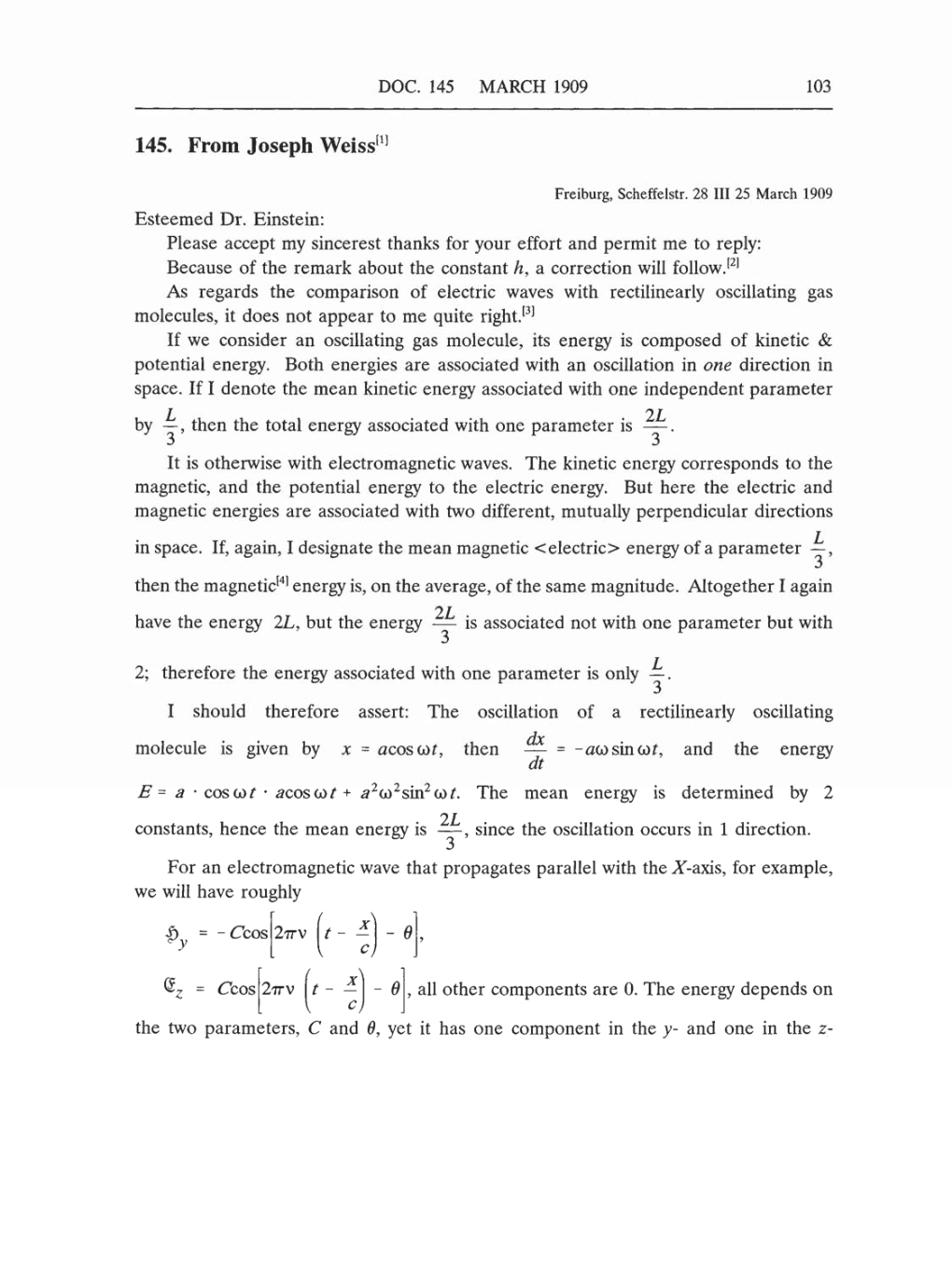DOC.
145
MARCH
1909
103
145.
From
Joseph
Weiss[1]
Freiburg,
Scheffelstr. 28 III
25
March 1909
Esteemed Dr. Einstein:
Please
accept
my
sincerest thanks
for
your
effort
and
permit
me
to
reply:
Because
of the remark about the
constant
h,
a
correction
will
follow.[2]
As
regards
the
comparison
of electric
waves
with
rectilinearly
oscillating gas
molecules,
it does not
appear
to
me
quite
right.[3]
If
we
consider
an oscillating gas molecule,
its
energy
is composed
of kinetic
&
potential
energy.
Both
energies
are
associated
with
an
oscillation in
one
direction
in
space.
If
I
denote
the
mean
kinetic
energy
associated with
one
independent parameter
L
2
L
by
-,
then the total
energy
associated
with
one
parameter is
-.
3
3
It
is
otherwise
with
electromagnetic
waves.
The kinetic
energy
corresponds
to
the
magnetic,
and the
potential
energy
to
the
electric
energy.
But
here the electric
and
magnetic
energies
are
associated with two different,
mutually
perpendicular
directions
L
in
space.
If,
again,
I
designate
the
mean magnetic
electric
energy
of
a
parameter
3,
then the
magnetic[4]
energy
is,
on
the
average,
of
the
same
magnitude. Altogether
I
again
have
the
energy 2L,
but the
energy
2L/3 is
associated not with
one
parameter
but
with
2;
therefore the
energy
associated
with
one
parameter
is
only
L/3.
I
should
therefore
assert:
The
oscillation
of
a
rectilinearly
oscillating
dx
molecule
is
given by x
=
acoscot,
then
dx/dt
=
-acosincot,
and
the
energy
E
=
a
.
cosoyt
.
acosoyt
+
a2(ö2sin2ut.
The
mean energy
is
determined
by
2
2L
constants,
hence
the
mean
energy
is
-,
since the oscillation
occurs
in
1
direction.
3
For
an
electromagnetic
wave
that
propagates parallel
with
the
X-axis,
for
example,
we
will have
roughly
y
/ \
· ·
·
Ccos
277V
t-
-
-
e
·
{
C)
z
Cc
os
277V
(
x)
t
-
-
-
0
9
\
c)
,
all
other
components
are
0.
The
energy depends
on
the
two parameters,
C and
0,
yet
it has
one
component
in the
y-
and
one
in
the
z-
